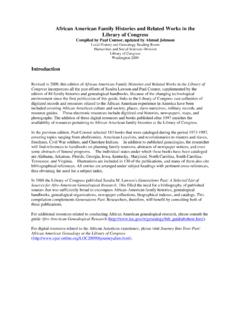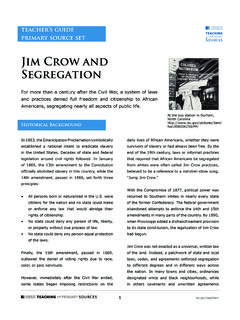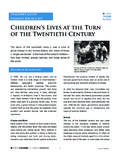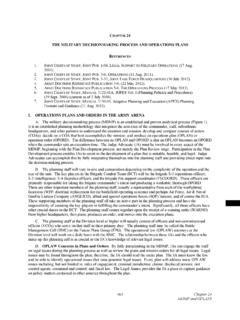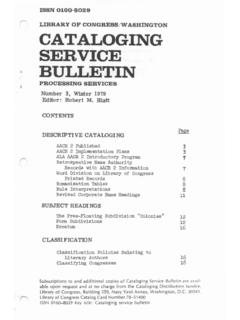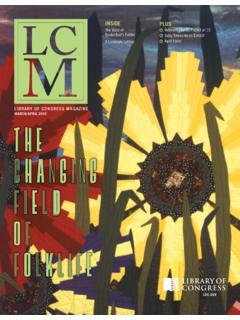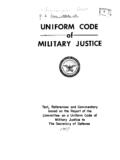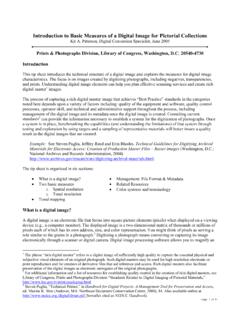Transcription of Fiscal Law Deskbook, 2014, Chapter 3 - Library of Congress
1 C. Chapter 3. 3: A. Availability of Appropriations as to Time THIS PAGE INTENTIONALLY LEFT BLANK. Chapter 3. AVAILABILITY OF APPROPRIATIONS AS TO TIME. I. INTRODUCTION .. 1. II. KEY DEFINITIONS .. 1. A. Appropriation or Appropriations 1. B. Authorizing Legislation .. 1. C. Fiscal Year .. 2. D. Period of 2. E. Commitment .. 3. F. Obligation .. 4. G. Subject to the Availability of Funds .. 6. III. THE BONA FIDE NEEDS 7. A. THE BONA FIDE NEED .. 7. B. THE BONA FIDE NEEDS 7. C. BONA FIDE NEEDS METHODOLOGY .. 9. D. 10. E.
2 Services .. 15. F. Training .. 19. G. Construction .. 20. H. 22. IV. MULTIPLE YEAR 22. V. BONA FIDE NEEDS RULE APPLIED TO REVOLVING 23. VI. BONA FIDE NEEDS RULE APPLIED TO INTERAGENCY ACQUISITIONS .. 26. VII. USE OF EXPIRED/CLOSED 27. A. 27. B. Expired 27. C. Closed Appropriations .. 28. VIII. USE OF EXPIRED FUNDS: FUNDING REPLACEMENT CONTRACTS /. CONTRACT MODIFICATIONS .. 30. A. 30. B. Contract Modifications Affecting 30. C. Bid Protests .. 35. D. Terminations for Default (T4D).. 35. E. Terminations for Convenience of the Government (T4C).
3 36. IX. MULTI-YEAR CONTRACTS AND FULL FUNDING 37. A. Full Funding 37. B. Incremental Funding of Major Defense 38. C. Incremental Funding of RDT&E 39. D. Multi-year Contracts .. 40. E. Incremental Funding of Fixed-Price 41. X. MISCELLANEOUS .. 41. A. 41. B. Requirements or Indefinite Quantity Contracts .. 42. XI. CONCLUSION SHORT OUTLINE .. 43. APPENDIX A .. 44. Chapter 3. AVAILABILITY OF APPROPRIATIONS AS TO TIME. I. INTRODUCTION. Following this instruction, the student will understand: A. The various time limits on availability of appropriated funds.
4 B. The Bona Fide Needs Rule and some common exceptions to that rule;. C. The rules concerning availability of funds for funding replacement contracts; and D. The general rules concerning use of expired appropriations. II. KEY DEFINITIONS. A. Appropriation or Appropriations Act. An appropriations act is the most common form of budget authority. It is a statutory authorization to incur obligations and make payments out of the Treasury for specified purposes. An appropriations act fulfills the requirement of Article I, Section 9, of the Constitution, which provides that no money shall be drawn from the Treasury, but in Consequence of Appropriations made by Law.
5 Government Accountability Office (GAO), A Glossary of Terms Used in the Budget Process, GAO-05-734SP, 13 (Fifth Edition, September 2005) [hereinafter GAO Glossary]. An appropriations act may include many separate provisions of budget authority. Each provision within an act may also be referred to as a fund or pot of money.. B. Authorizing Legislation. Authorizing Legislation (called authorization acts ). provides the legal basis for actual appropriations that are passed later. It establishes and continues the operation of federal programs or agencies either indefinitely or for a specific period, or sanctions a particular type of obligation or expenditure within a program.
6 Authorizing legislation does not provide budget authority, which stems only from the appropriations act itself. GAO Glossary, at 15. 3-1. C. Fiscal Year. The Federal Government's Fiscal year runs from 1 October through 30. September. This Fiscal year governs the use of appropriated funds and is referenced throughout this Chapter . The Federal Fiscal Year 1 Oct 30 Sept 1. The Fiscal year has changed throughout history. Prior to 1842, all accounting was based on a calendar year. From 1842 to 1976, the Fiscal year ran from 1 July to the following 30 June.
7 In 1974, Congress mandated the Fiscal year run from 1 October to 30 September beginning in 1977. 31 1102. 2. A Fiscal year is indispensable to the orderly administration of the budget given the vast and complicated nature of the Treasury. Bachelor v. United States, 8 Ct. Cl. 235, 238 (1872); Sweet v. United States, 34 Ct. Cl. 377, 386 (1899) (stating that it is a necessity that the Government have a fixed time in the form of a Fiscal year;. whether it be with the commencement of the calendar year or at some other fixed period is not material, but that there should be a limit to accounts and expenses into distinct sections of time is an absolute necessity.)
8 D. Period of Availability. The period of time for which appropriations are available for obligation. If funds are not obligated during their period of availability, then the funds expire and are generally unavailable for new obligations. GAO Glossary, at 23. 1. Default Rule: Most funds are available for obligation only for a specific period of time, presumed to be only during the Fiscal year in which they are appropriated. 31 1502; DoD FMR Vol. 14, Ch. 2, para. ; DFAS-IN Reg. 37 . 1, para. 080302. 2. The annual DOD Appropriations Act typically contains the following provision: No part of any appropriation contained in this Act shall remain available for obligation beyond the current Fiscal year, unless expressly so provided herein.
9 See Consolidated Appropriations Act, 2014 , Pub. L. No. 113-76, 8003, 128 Stat. 5 ( 2014 ). 3-2. 3. Periods of Availability for Various Appropriations. Below are examples of the standard periods of availability for some of the more common appropriations. Appropriation Period of Availability Operations and Maintenance (O&M) 1 Year Personnel 1 Year Research, Development, Test, and Evaluation 2 Years (RDT&E). Overseas Humanitarian, Disaster, and Civic 2 Years Aid (10 401). Procurement 3 Years Military Construction 5 Years Shipbuilding and Conversion, Navy 5 Years (with some exceptions).
10 Available until expended or X-year funds No expiration date a. The appropriations act language supersedes other general statutory provisions. National Endowment for the Arts-Time Availability for Appropriations, B . 244241, 71 Comp. Gen. 39 (1991) (holding that general statutory language making funds available until expended is subordinate to appropriations act language stating that funds are available until a date certain). b. Multiple year appropriations expressly provide that they remain available for obligation for a definite period in excess of one Fiscal year.
